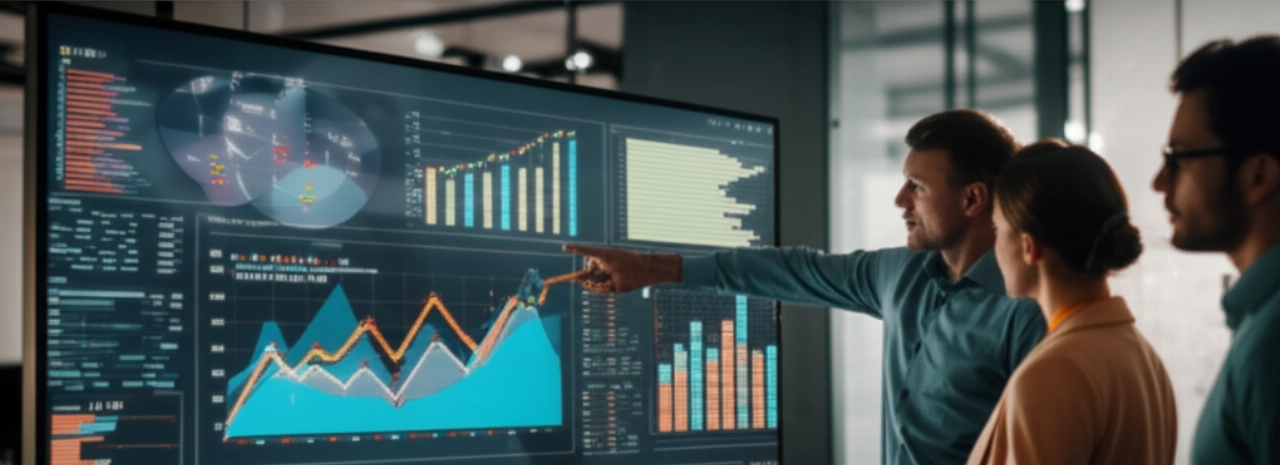Are you an entrepreneur, CEO, or marketing manager navigating a sea of data every day: reports, analytics, metrics? Among these, one acronym often appears: CTR. Click-Through Rate. A seemingly cold number that can hide the key to your growth, or the abyss of online invisibility.
Do you feel overwhelmed by technical complexity? Are you afraid of wasting budget on campaigns or websites that don't bring in a single client? Does it annoy you to have an excellent product or service, but not be found on Google by the right clients?
We understand. The frustration of not knowing how to turn those "impressions" into "concrete opportunities" is palpable. But what if we told you that CTR is not just a metric, but the strategic compass that shows you the way to attract the right clients, optimize your investment, and dominate your online market?
This page will not sell you a service. It will provide you with the map to decipher the language of Google Search Console and transform your CTR into a powerful engine for lead generation and revenue. Get ready to think of your digital marketing not as a cost, but as a profit center.

Beyond the Number: Why CTR is the True Compass for Your Digital Growth
Many focus only on SERP position. "We're first for X keyword!" But being first with a low CTR is like having a billboard in the city center that no one stops to read. CTR is the first real proof of engagement, the signal that your title and meta description have captured your potential client's attention, responding to their specific search intent.
For a B2B company, a high CTR on relevant queries means you are intercepting professionals and businesses actively looking for your solution. It's not generic traffic, it's qualified traffic. Every percentage point of CTR gained translates into more interested visitors, more conversion opportunities, and ultimately, a higher ROI (Return On Investment) for your SEO and content marketing strategy.
Imagine your website as a store. "Impressions" are the people passing by the storefront. "CTR" is the number of people who decide to enter. If your storefront (title and description) isn't attractive or doesn't communicate the right value, even with millions of passersby, your store will remain empty. Our goal is to make your storefront irresistible to your ideal target.

Deciphering Google Search Console: Your Map to a Champion CTR
Google Search Console (GSC) is a free and powerful, often underestimated, tool that gives you a clear view of how your site performs on Google. Here's how to use it to improve your CTR:
- Analyze Queries: Don't just look at the keywords you rank high for. Look for queries with many impressions but a low CTR. This is your hunting ground. It means Google shows your content, but users don't click. Why? Perhaps your title isn't persuasive enough or doesn't answer the intent.
- Evaluate Average Position: A 2% CTR in position 10 is very different from a 2% CTR in position 2. For positions 1-3, a low CTR is a red flag. For lower positions, there's huge potential for improvement.
- Optimize Titles and Descriptions: Once critical queries are identified, rewrite your
<title>and<meta description>. Include the keyword, but most importantly, make them appealing, solve a problem, promise a benefit. Use your client's language. - Leverage Structured Data (Schema Markup): Elements like star reviews, FAQs, or recipes can make your snippet more visible and clickable directly in SERP, increasing your CTR.
- Improve Page User Experience (UX): A good CTR brings users to your site, but if the page isn't relevant or easy to navigate, the user will go back. Ensure the content is high quality and fully answers the search intent.
This process is not a one-time activity, but a continuous cycle of analysis, optimization, and measurement. This is how you build a digital presence that not only appears but converts.

The Inflated CTR Trap: Why Unqualified Traffic Burns Your Budget
Beware: not all clicks are equal. There's a trap, and it's that of CTR inflated by unqualified traffic. Some agencies, or DIY approaches, might focus only on increasing traffic volume, perhaps with strategies that attract generic visitors, not aligned with your B2B sales funnel.
A high CTR on keywords that are too generic or irrelevant to your business only means you're paying (or investing time) for traffic that will never convert into a client. It's like distributing flyers for a business consulting service at a rock concert: many flyers distributed, zero clients acquired.
The true value of CTR, for us at Perugini Multimedia, is not just the number of clicks, but their quality. We prefer a slightly lower CTR but on high-intent queries, which lead to high conversion rates, rather than a very high CTR on queries that only generate "curious" visitors. Your peace of mind and your budget are our priority. We will never make you chase vanity metrics.
From Data to Revenue: Success Stories Hidden in CTR
One of our clients, a B2B company specializing in logistics software solutions, had a problem: an excellent position for generic keywords, but few qualified demo requests. Analyzing Google Search Console, we noticed a surprisingly low CTR for some specific long-tail queries, which indicated a very high purchase intent (e.g., "ERP integrated warehouse management software").
We worked on the titles and meta descriptions of those pages, making them more specific and benefit-oriented, and improved the relevance of the internal content. The result? Within 4 months, the CTR for those high-intent queries increased by 45%. This not only meant more traffic but a 60% increase in qualified demo requests, transforming a visibility problem into a tangible revenue increase. This is the power of reading CTR as a strategic, not just numerical, metric.
Your Strategic Partner for a Converting CTR: The Perugini Multimedia Approach
The difference between providing a service and building a partnership lies in the depth of understanding and shared goals. At Perugini Multimedia, we don't just "do SEO" or "create content." We immerse ourselves in your business, analyze your data through the lens of your ROI and your overall digital strategy.
Our authority doesn't come from vague promises, but from a data-driven and measurable results-oriented approach. We explain complex concepts like digital branding or data analysis with disarming simplicity, because our goal is to make you aware of the opportunities and growth levers available to you.
We are the strategic partner you've always wanted: empathetic to your business goals, meticulous in data analysis, and proactive in identifying opportunities. Our focus is to transform every click into a step towards your growth, ensuring you the peace of mind of an investment that brings concrete and measurable results.
Frequently Asked Questions about CTR and Your Digital Strategy
What is a good CTR for my B2B sector?
There's no universal "perfect CTR." It depends on the industry, SERP position, and keyword intent. For B2B, a lower CTR on very specific, high-conversion-intent queries is often more valuable than a high CTR on generic queries. What matters is its evolution and its correlation with your conversions.
How long does it take to improve CTR and see results?
Improving CTR is a continuous process. Initial optimizations can bring visible results in a few weeks (2-4), but the impact on qualified traffic and conversions consolidates in the medium to long term (3-6 months) with constant analysis and optimization.
Is CTR the only metric that matters for online success?
Absolutely not. CTR is a fundamental metric for evaluating the attractiveness of your snippet and the relevance of your content to the search intent. However, it must always be analyzed alongside other key metrics such as conversion rate, time on page, bounce rate, and, most importantly, the overall ROI of your digital activities.
Can I improve CTR on my own or do I need an agency?
You can start improving CTR by analyzing basic Google Search Console data. However, for deep optimization, which considers the nuances of B2B search intent, advanced keyword research, competitor analysis, and the implementation of complex SEO optimization strategies, the experience of a specialized agency like Perugini Multimedia is crucial to maximize results and avoid wasting time and resources.
How does CTR connect to the ROI of my digital investment?
CTR is directly linked to ROI because it influences the volume and quality of traffic that comes to your site. A higher CTR for qualified queries means more potential clients visiting your pages. If these pages are optimized for conversion, an improved CTR translates into more leads, more sales, and consequently, a greater return on your investment in SEO and content marketing.
You've made an important journey, from data confusion to the strategic clarity of CTR as a growth lever. Now you know that behind that number lies the potential to attract the right clients and make your business prosper.
Perhaps you think it's too complex, or that you don't have time to dedicate to it, or that "who knows if it will work for me." The truth is, you can't afford not to. Your company deserves a clear digital strategy that brings measurable results, not just promises.
Stop navigating blindly. The first step isn't a quote, but a strategic analysis of your online potential. It's free, no-obligation, and will give you more clarity than a thousand calls. Click here, tell us about your project, and discover the opportunities you're missing. Start now to transform your marketing into a profit center.
Now that you know how CTR can be a compass, discover how we can build your tailored B2B SEO strategy or how B2B content marketing can attract your ideal clients.





